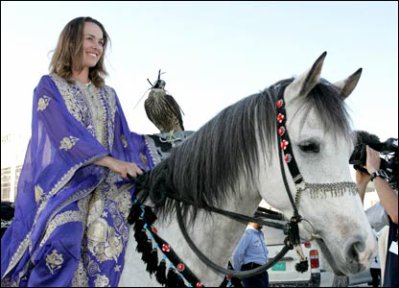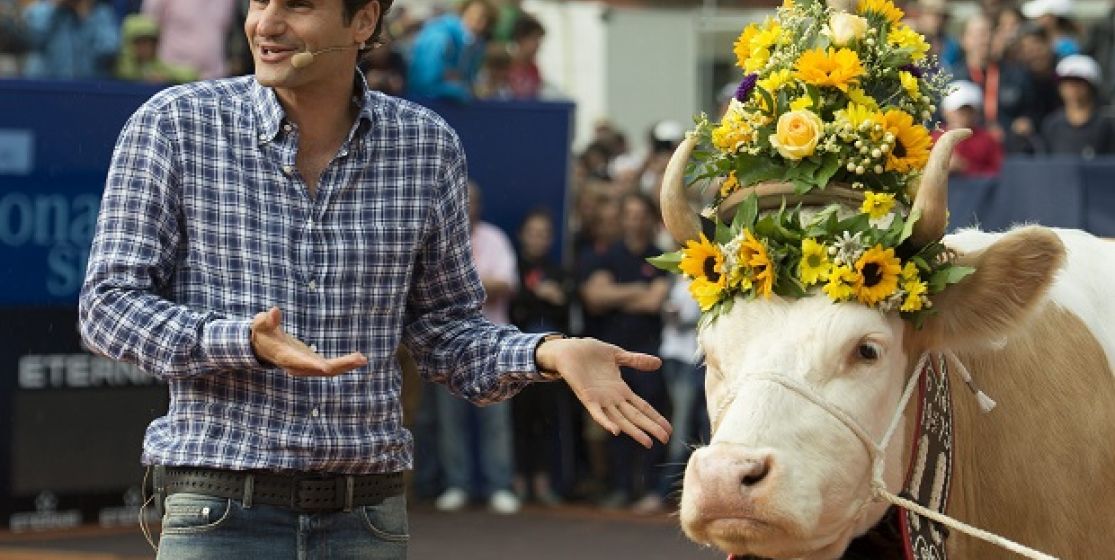Each trophy lifted is supposed to leave an unforgettable memory to the champion. Yet, in tennis, more than anywhere else, some of these rewards (and the favours around it) surprised more than they pleased their new owners. Cars, sombreros, gift vouchers and milk cows, welcome to the museum of curiosities.
1/ «A sign of destiny»
"We are the oldest family business in Europe," touts the house Mellerio, famous French jeweller Rue de la Paix in Paris. Besides its activity of jeweller for kings and emperors, this venerable institution, founded in 1613, has been manufacturing each year since 1981 the Musketeers trophy given to the winner of Roland Garros. In 1946, when Marcel Bernard won Porte d'Auteuil, he didn't get the chance to lift any trophy. At this time, there was none, even if the Mellerio house already had several centuries of existence. The French player then collected vouchers for sporting goods and was given a silver medal that he received several months after the tournament. One evening, a fire broke at Bernard's house. The medal was reported lost. Then finally found. Before being offered to the French Tennis Federation by the daughter of the medallist. Who explained the gesture: "This is the only material object that has survived to this fire... It’s a sign of destiny that I want to share with French tennis." Weird, but class.
2/ «the sponsors were not happy at all»
«Superstition is the poetry of life», wrote the German philosopher Johann Wolfgang von Goethe. But was he playing tennis? Did he know the dark side of this mind sport? A fetish world, full of superstitions and foibles of all kinds. Evidenced by the misadventure of Lindsay Davenport. "In 1995, in Strasbourg, I dropped the trophy of the tournament, remembers the American. All the little bits of the trophy that I had broken had spread on the court and the doubles final had to be postponed. The sponsors were not happy at all." The American swore that she would no never lift any more trophies above her head, with outstretched arms but rather at ears level or just under the chin. And she promised to her fans to try it again only the day when she would win her first Grand Slam. Thing done in 1998, when he won the U.S. Open. Mazeltov !
3/ «A cow garage»
In 2003, Roger Federer won Wimbledon, and probably didn't know yet that this title would be the first of a long series. Upon his return to Switzerland, the organizers of the Gstaad tournament, his hometown, offered him a cow as a reward. Its name? Juliet, 3, who died in 2007. A gift that the organizers renewed last year, ten years after his first title in London. Out Juliet, time for Desiree, also 3 years old, to be part of the Federer family. "Now I need to find a garage for a cow, although I have no idea what a cow garage looks like!" he said on the day of the ceremony.
4/ « They are delusional»
In 2001, was held for the first time in history a female tennis tournament in the Middle East, the Qatar Open for Ladies. In a country where competitive sport for women is virtually non-existent - because of religious traditions - the organizers nevertheless decided to spoil their winner. Her name? Martina Hingis. At the awards ceremony, the Swiss showed up on a horse - that defecated on the court in the middle of the ceremony - in a traditional dress studded with gold, and a solid gold crown on her head. « To come out riding a horse onto the court like that for the closing ceremony and wearing the Arabic dress with the crown, I felt like a princess and ever since I was a little girl I always wanted to do something like that,» said the champion, delighted. Before coming to her senses a few weeks later: «it’s nice to have a crown, but if they think that I’m going to wear it some day, they’re delusional.»

5/ «Too big to wedge any of my furniture »
If Boris Becker never really tried to flee the limelight, the fame has sometimes made him wild and fierce. In 1991, the German defeated the American Ivan Lendl in the final of the Australian Open. Which delighted the world number one, a place that he won thanks to this prestigious victory? No. After shaking hands with his opponent, Becker left the stage. Without a word. Without leaving a forwarding address. His only wish? To be left alone for a few minutes before the awards ceremony to walk in the wild and swim in the Yara, the river that runs through Melbourne. Of course, it delayed the ceremony "All I wanted was to go back to the hotel, and take a step back," he said in his autobiography The player. Before confessing: "Anyway, I've always hated trophies. Most of them are ugly and too big to wedge any of my furniture."
6/ The drawings of Unicef kids
Since 2010, the ‘s-Hertogenbosch tournament, in the Netherlands, has become a tennis tournament like no other: indeed, it is the first tournament to cooperate very closely with a charity. Namely UNICEF. The goal? To shed light on this UN agency dedicated to improving and promoting the condition of children, and of course bringing money. A percentage deducted from ticket sales, but also on the players' prize money, is donated to the association. In return, children around the world take turn each year to colour the winner's trophy on a ceramic plate in the form of drawing. With only one instruction: that the work of these aspiring artists evokes tennis. Naturally.
.jpg)
7/ A Pear and a Sombrero
Unlike Argentines, Chileans or even Brazilians, it is an understatement to say that Mexicans are not famous for their tennis culture. And yet, there is a Mexican Open. What do we know about this event? That it is held every year in Acapulco, late February, indoor and on hard courts, and it rewards its winner with a giant pear lying on a black box. All complemented by an authentic sombrero. Clichés die hard...
.jpg)
8/ Uzbekistan, dressing gown and Aladdin
It might no longer exist today, but between 1997 and 2002, the ATP tournament of Tashkent, capital of Uzbekistan, was even more enjoyable for its awards ceremony than for the prestige of the competition. Each year it was the same ritual: the two finalists had to wear a kind of traditional Uzbek dress, consisting of a royal blue gown with gold floral borders. In 1997 and 1998, Tim Henman was there. He said: "I remember that the organizers gave us this outfit. It felt like we were in Aladdin rather than on a tennis court... Between us, I would have preferred for them to give me the golden lamp of the Genius."
.jpg)
9/ «I’m going to have to build a new garage»
Famous stage of the WTA, the Stuttgart tournament had for some years a small particularity: the winner of the event was offered the opportunity to choose between the classic prize money or leaving with a Porsche of equivalent value. Today is a double hit: the organizers provide the money and the car in case of victory. Winner for the last three years, Maria Sharapova had some logistical problems. "I'm going to have to build a new garage to park all these cars," she said in April. Amongst the men, Jeremy Chardy, who won the tournament in 2009, received a Mercedes E350 and an invitation for a tour of the Mercedes-AMG factory in Affalterbach, near Stuttgart. Since then it has become like a mantra: "I’ve tried one, now I want them all! I just have to play well, and give the best of myself to leave every year with one of these gorgeous cars!»
10 / Four times engraved on the silver bowl… without even playing !
Legendary and impressive both by its shape and size, the silver bowl – which is awarded every year to the country that won the David Cup by BNP Paribas – used to be one of the hottest and most popular tennis trophies. In 1899, Dwight Davis, American tennis player and founder of the event, paid for the award and ordered it himself from the jeweler Shreve, Crump and Low in Boston. He then set his choice on a classic cup. A trophy on which you can read the name Christian Boussus. Between 1929 and 1932, his name was indeed engraved four times on the famous bowl. And yet, Boussus didn’t play any of those victorious matches ! The man who was nicknamed the "5th Musketeer" was actually the substitute for the France behind Nectarine, Borotra, Cochet and Lacoste. Worse, Bossus only played the Davis Cup by BNP Paribas once. It was in 1938. Once the latter retired…
By Victor Le Grand






